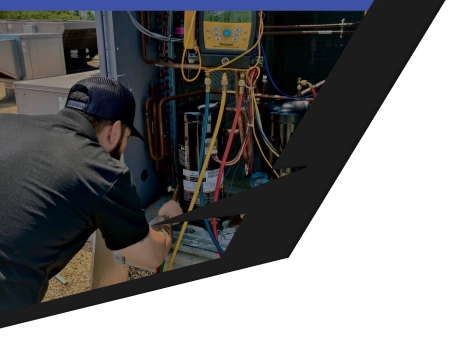Creating a tight envelope for your Richardson, TX home is a great way to save money on your home energy costs and reduce your carbon footprint. With the right windows and doors and the right amount of insulation, you can keep more of your heated and cooled air trapped inside and spend a lot less to run your HVAC system. Adding attic insulation with a sufficiently high R-value is a great way to start. However, to ensure resident safety and prevent property damage, there are several places where attic insulation should never be installed.
The Dangers of Installing Attic Insulation in the Wrong Areas
Both mineral wool and fiberglass insulation are non-combustible. Best of all, they remain this way throughout their service lives. When using these insulating materials, there’s no need to add fire retardant or other preventative coatings. However, some insulating materials are highly flammable, including foam insulation and cellulose.
Cellulose insulation contains about 80% recycled paper fiber. Its largely paper-based composition necessitates the use of additive chemicals to enhance its flame retardancy. Foam insulation is also treated with fire retardants to reduce the likelihood of ignition and burning. Notwithstanding these applications, you still need to avoid installing either of these insulation types too close to any fixed sources of heat or live wires. If they ignite, these materials could engulf the entire building in flames in mere seconds.
Near Knob and Tube Wiring
If you own an older home that still has knob and tube wiring, you may have a hard time finding a professional who will add insulation to the building. Most providers won’t touch these projects until knob and tube wiring has been replaced or deemed inactive. Comprising ceramic knobs and thick, copper wires surrounded by rubberized cloth, knob, and tube wiring was introduced in the 1880s and remained the industry standard for electrical wiring until the late 1940s.
Though not inherently unsafe, this wiring develops several hazards over time. Both wear and exposure cause knob and tube wiring to lose its insulating cover by drying the rubberized cloth out until it cracks and flakes off. Given that most knob and tube wiring has been around for at least 90 years, there’s always the likelihood of encountering bare, live wires. Putting any insulation around these wiring systems greatly increases the risk of fire.
Near Existing Gaps, Cracks, and Other Air Leaks in Building Materials
Before insulating any home, it’s important to resolve all major air leaks in building materials. These openings allow moisture in and set the stage for mold growth. They can also serve as access points for rats, mice, and other small animals that use insulating materials for nesting.
Near Heat-Generating Appliances
If you have any water heating equipment or oil burners in your attic, avoid placing any insulation near them. Doing so creates a high and completely unnecessary risk of fire. These appliances will generate enough heat on their own to eliminate any heat loss that occurs at their connections or venting systems.
Around Recessed Lighting Cans
Recessed lighting cans are another continuous source of heat that could exceed the preventative abilities of flame retardants and lead to sudden and fast-spreading fires. When insulation is essential around these features, the best choice is mineral wool. Also known as rock wool or mineral slag, mineral wool is fire-rated for temperatures up to 1800 degrees Fahrenheit.
At or Around Chimneys
You’ll hear differing opinions on whether you should insulate around your chimney stack and how to go about it. This feature could be a considerable source of heat loss if cracks or gaps let cold outdoor air in. However, according to both the International Residential Code (IRC) and the United States Department of Energy (DOE), it’s vital to maintain sufficient clearance between chimneys and insulating materials. Insulating this feature incorrectly or with the wrong materials is a code violation that could keep your home from passing lender-required inspections and qualifying for home insurance. More importantly, it’s a major fire hazard.
Both masonry and metal chimneys should be air-sealed to prevent heat loss and ensure overall efficiency. When insulating is essential, you must maintain sufficient clearance and use only fiberglass or mineral batts.
With unmatched credentials and a longstanding commitment to excellence, we’re proud to serve Richland, TX and the surrounding communities. We offer heater and air conditioner installation, maintenance, and repairs. We also provide attic insulation, duct cleaning, dryer vent cleaning, and advanced indoor air quality (IAQ) solutions. To schedule an appointment, get in touch with Cool Experts AC today!


